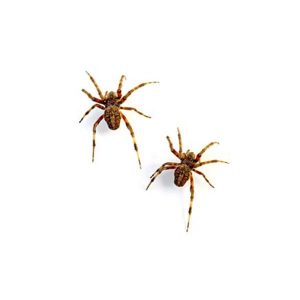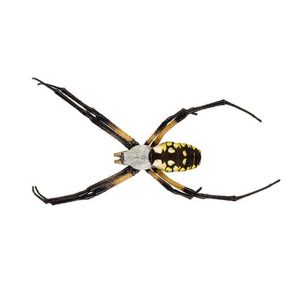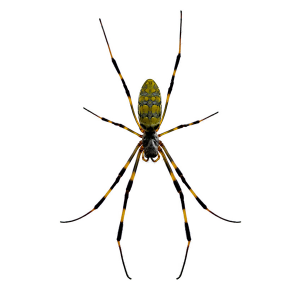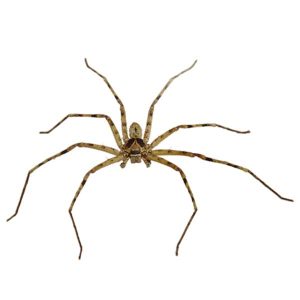Funnel Weaver Spiders in Georgia
Funnel Weaver spiders possess a dark-colored abdomen (back section of a spider), usually with stripes and intricate patterns, and a brown, tan, or yellow-brown cephalothorax (front section of a spider), which will possess two dark-colored stripes. The body of a funnel weaver spider ranges between 10-20 millimeters in length for females and 9-18 millimeters for males. Identification of funnel weaver spiders can sometimes be aided by looking at the spider’s web. They will have a sheet web (this looks like the top sheet on a bed) that has a funnel or cone shape incorporated at one side. Funnel weaver spiders can be large in size, which can lead homeowners to confuse them with wolf spiders. One differentiating characteristic is the visible spinnerets (the organ spiders use to spin webs/silk) on the back of funnel weaver spiders. These spinnerets stick off the backside of the spider and may look like an additional segment of the abdomen or like a tail. In comparison, other spiders’ spinnerets are usually hidden under the abdomen.
Funnel Weaver Habitat
These spiders only come inside as incidental pests, usually as temperatures start getting cooler. They are usually found outdoors in tall grass, shrubs, bushes, evergreen trees, behind siding, in woodpiles, and other areas that offer adequate protection. They are a web-dwelling spider, and that is most often where they are going to be found.
Funnel Weaver Spider Behaviors, Threats, or Dangers
These spiders like to build webs in areas that can inconvenience people as they go about daily outdoor activities. They build their webs in areas where people outdoors may not notice them; if a person happens to accidentally disturb the web it can result in a bite, not because the funnel weaver is being aggressive, but because it thinks you are a prey item in the web. They rely on quick speed to run through their web and envenomate their prey. If they are scared they will also rely on this speed to escape, which can scare unsuspecting homeowners. They can also build ‘unsightly’ webs in areas that are otherwise aesthetically pleasing. If a funnel weaver spider does happen to bite, it is no worse than a bee sting (unless you are allergic to the venom or the bite becomes infected). Contact your local spider exterminators for help with funnel weaver spiders.
Need help with pest control?
Fill out the form below and we’ll be in touch!
*During normal business hours. After hours inquiries will be returned the next business day.





